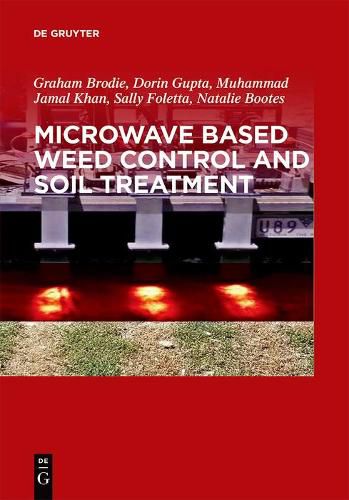Readings Newsletter
Become a Readings Member to make your shopping experience even easier.
Sign in or sign up for free!
You’re not far away from qualifying for FREE standard shipping within Australia
You’ve qualified for FREE standard shipping within Australia
The cart is loading…






This title is printed to order. This book may have been self-published. If so, we cannot guarantee the quality of the content. In the main most books will have gone through the editing process however some may not. We therefore suggest that you be aware of this before ordering this book. If in doubt check either the author or publisher’s details as we are unable to accept any returns unless they are faulty. Please contact us if you have any questions.
Herbicide resistance has become an important constraint on modern agricultural practices. An alarming increase in weed biotypes that are resistant to herbicides has also been reported. Opportunity exists for a novel weed management technology, which is also compatible with no-till agricultural practices. Microwave heating can kill both emerged weed plants and weed seeds in the soil. When the intensity of the microwave fields is moderate, plants, which have already emerged, are susceptible to microwave treatment. If the microwave field is intense enough, very rapid volumetric heating and some thermal runaway in the plant structures cause micro-steam explosions in the plant cells, which rupture the plant structures, leading to death. Soil treatment requires significantly more energy; however, there are secondary benefits for crops growing in microwave treated soil. These include: significant reduction of the dormant weed seed bank; significant reduction of nematode populations; significant reduction of fungal populations; better availability of indigenous nitrogen for the plants; more rapid humification; and significant increases in crop growth and yield. Microwave weed management and soil treatment is not restricted by weather conditions; therefore, the technology may offer some timeliness and environmental benefits, which are yet to be quantified in a cropping system.
$9.00 standard shipping within Australia
FREE standard shipping within Australia for orders over $100.00
Express & International shipping calculated at checkout
This title is printed to order. This book may have been self-published. If so, we cannot guarantee the quality of the content. In the main most books will have gone through the editing process however some may not. We therefore suggest that you be aware of this before ordering this book. If in doubt check either the author or publisher’s details as we are unable to accept any returns unless they are faulty. Please contact us if you have any questions.
Herbicide resistance has become an important constraint on modern agricultural practices. An alarming increase in weed biotypes that are resistant to herbicides has also been reported. Opportunity exists for a novel weed management technology, which is also compatible with no-till agricultural practices. Microwave heating can kill both emerged weed plants and weed seeds in the soil. When the intensity of the microwave fields is moderate, plants, which have already emerged, are susceptible to microwave treatment. If the microwave field is intense enough, very rapid volumetric heating and some thermal runaway in the plant structures cause micro-steam explosions in the plant cells, which rupture the plant structures, leading to death. Soil treatment requires significantly more energy; however, there are secondary benefits for crops growing in microwave treated soil. These include: significant reduction of the dormant weed seed bank; significant reduction of nematode populations; significant reduction of fungal populations; better availability of indigenous nitrogen for the plants; more rapid humification; and significant increases in crop growth and yield. Microwave weed management and soil treatment is not restricted by weather conditions; therefore, the technology may offer some timeliness and environmental benefits, which are yet to be quantified in a cropping system.